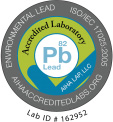
States with the Best Air Quality in 2024
Air quality is a crucial aspect of public health and environmental sustainability. It impacts everything from respiratory health to climate change. With increasing awareness of pollution and its detrimental effects, ...

Can Humidity Cause Mold Growth?
Mold growth is common in many homes, especially in areas with high humidity. Mold consists of microscopic fungi that grow in multicellular filaments called hyphae. It can thrive on any ...

Viable Sampling vs. Nonviable Sampling
Monitoring air quality is critical to ensure the safety and health of individuals. Two primary testing methods for mold, bacteria, and other microorganisms are viable sampling and nonviable sampling. Each ...

What is Soil Vapor Intrusion?
Soil vapor intrusion (SVI) is an environmental issue that has gained considerable attention in recent years. Awareness and education have been raised after train derailments like in East Palestine, Ohio ...

Causes And Effects of Lead in Water
Any contamination of a water source is a serious health threat, with lead exposure in tap water being one of the most concerning contaminants. Fortunately, the use of lead pipes, ...












